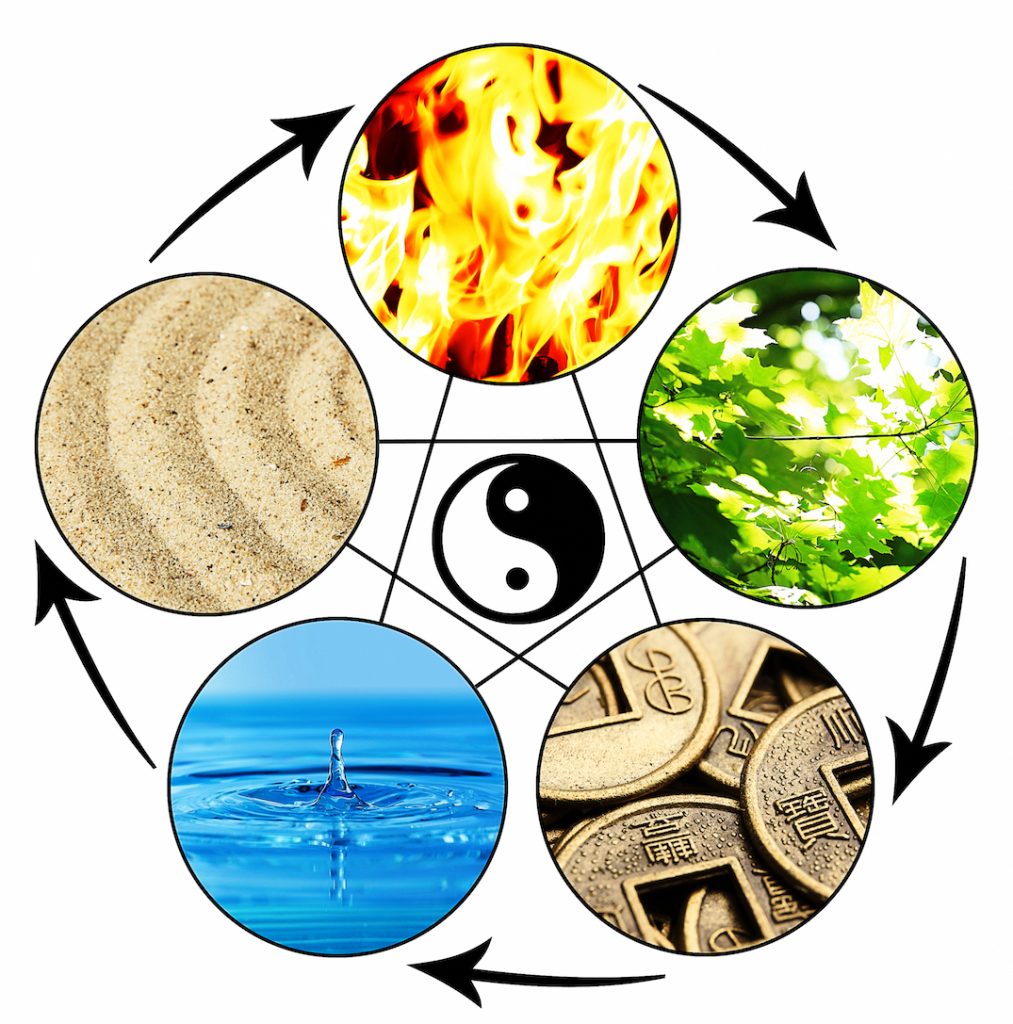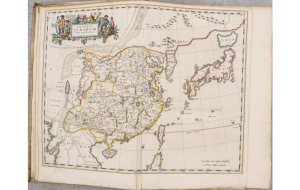
Chinese Wuxing
Wuxing (五行), also known as the Five Elements, is a traditional Chinese conceptual scheme. It is used to explain an array of phenomena, from cosmic cycles to the interaction between internal organs. It originally refers to the five major planets (Jupiter, Saturn, Mercury, Mars, and Venus) that create the five dimensions of earth life. The 5 elements of it are jin (metal), mu (wood), shui (water), huo (fire), tu (earth). These elements are normally around 73 days each and are used to describe various states in nature.
Wood – rising, development (of an action), impulse, expansion, decampment
Fire – embodiment, definition, action, dynamic phase, design
Earth – alteration, transformation, transmutation, change
Metal – sinking, contraction, declining
Water – contemplation, calmness, (re-)consideration, observation, reflection
Wuxing is similar to the Greek four elements (fire, air, earth, and water), which were said to contain all the building blocks of matter. But when the Chinese talk about elements, they are talking about change and metamorphosis from one state to another. Each of the five elements represents an aspect of a dynamic process, which could explain the process of the universe. It says that everything in the universe goes through 5 phases perpetually in no particular order. Therefore, although Wuxing is popularly known as the five elements, it doesn’t describe the concept properly. It might be better to think of it as the five phases or cycles.
Wuxing also explains the relationship between these five phases. These phases describe the energy transformation from one state to another. Based on a particular directional energy flow from one phase to the next, the energy interaction can be destructive, expansive, or exhaustive. Practitioners with knowledge of each aspect of energy flow are able to apply certain cures or a rearrangement of energy in a way that is believed to be beneficial for the receiver in Feng Shui (风水) treatment.
Having become a distinct philosophical tradition during the Han dynasty, Wuxing gradually developed into a conceptual device that is used to explain not only cosmology, morality, and medicine, but virtually every aspect of Chinese life and Chinese thinking. Wuxing today as a developed thought has been incorporated into Chinese lives, including the way of space arrangement (Feng Shui), medicine, or to one’s date of birth.

For example, since ancient times, Chinese sages have skillfully applied Wuxing to the medicine field, learning and explaining physiological phenomena with the dialectical relation of the Five Elements, trying their best to adapt to internal natural laws and to master the operating mechanism of the human body to prevent and treat diseases. According to Five Elements, the heart has the Fire element, the lung Metal, the liver Wood, the spleen Earth, and the kidney Water. The Five Elements theory is mainly used to analyze and study the interrelations and physiological functions of these body parts, and to explain their mutual influences under pathological conditions.
More specifically, if the doctor found a weakness in people’s lung pulse, in addition to possible breathing difficulties, it may lead to excessive sadness, skin problems, and aggravation of the condition in Autumn. All of these are manifestations of the Metal Phase. Besides, lungs are connected to kidneys, spleen, heart and liver through generating and overcoming interactions. It means that weakness/disease in the lung may compromise all the connected organs.
Want to learn more? TBC offers Introduction to Traditional Chinese Medicine as a class, where students can learn from practitioners and experts. Plus, our Anton Library has books upon books on the subject, such as ‘The Web That Has No Weaver’ by Ted Kaptchuk and ‘Chinese Medicine and Healing: An Illustrated History’ by TJ Hinrichs and Linda L. Barnes.
By Suemmer Luo, TBC Intern





